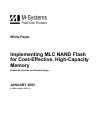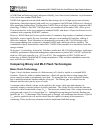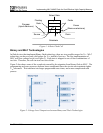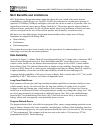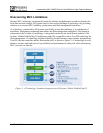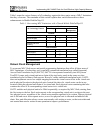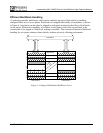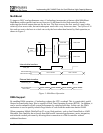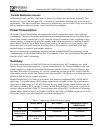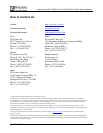
Implementing MLC NAND Flash for Cost-Effective, High-Capacity Memory
91-SR-014-02-8L 9
Table 1 maps the various features of x2 technology against the three major areas of MLC limitations
that they overcome. The remainder of this section explains how each feature achieves these
enhancements in Mobile DiskOnChip G3.
Table 1: Overcoming MLC Limitations with x2-based Mobile DiskOnChip G3
Areas of MLC Enhancement
x2 Technology Feature
Reliability Performance
Flash
Management
TrueFFS
Robust flash management
a a a
Enhanced EDC
a a a
Enhanced ECC
a a a
Efficient bad block
handling
a
a
Thin Controller
MultiBurst
a
DMA support
a
Parallel multiplane access
a
Flash Media
Two parallel planes
a
a
Robust Flash Management
To overcome MLC flash access and partial programming limitations that affect all three areas of
MLC limitations, x2 technology uses a specially customized translation layer called Sequential
Access Flash Translation Layer (SAFTL). SAFTL is incorporated seamlessly into M-Systems’
TrueFFS. It maps each virtual unit into a chain of physical units, much in the same way that
translation layers for Binary flash operate. However, unlike traditional translation layers, SAFTL
does not implement one-to-one simple mapping between the virtual sector offset in the virtual unit
and its physical location in the physical units. Instead, the data of a virtual sector can be in any
location within the physical unit chain of its virtual unit. Each physical sector containing data also
contains the offset of its corresponding virtual sector in its virtual unit.
SAFTL enables each physical unit to be filled sequentially, as required by MLC flash, starting from
the first sector to the last. Each write request to the corresponding virtual unit is written to the next
free physical sector, regardless of the virtual sector number requested to be written. When a physical
unit is full and a new write request arrives, a new free physical unit is allocated and added to the
chain. New unit allocation always occurs concurrently with writing a sector, so that sector data and
unit control data can be written in one operation to improve performance.



